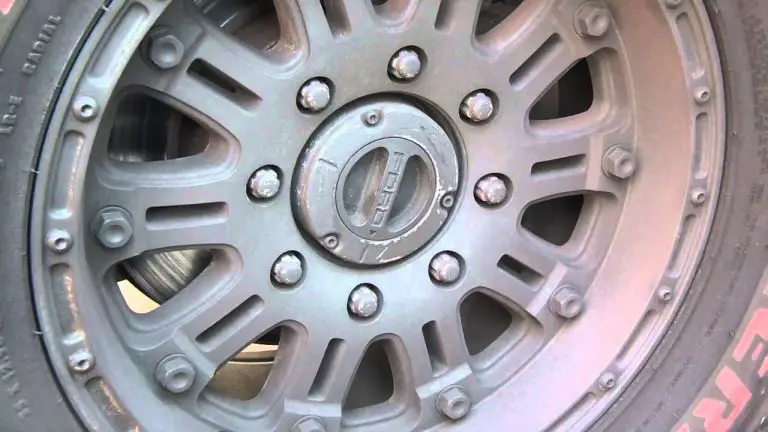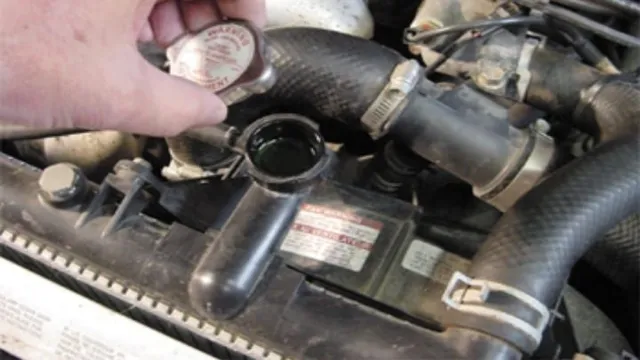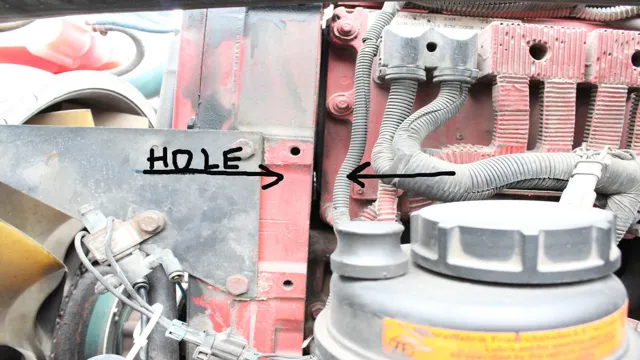Top Tips and Tricks on How to Safely and Effectively Air Up Your Dually Tires
If you own a dually truck, it’s crucial to ensure that your tires are in the best condition possible for optimal performance and safety. Air up dually tires play a vital role in maintaining your dually trucks’ performance, stability, and handling. With more tires on the road, ensuring the right air pressure can help distribute the weight evenly, reduce wear and tear, and increase fuel efficiency.
But is it worth it to air up your dually tires? And if so, how do you go about it? In this complete guide to air up dually tires, we’ll take a deep dive into everything you need to know about this process, including the importance of tire pressure, how to check and adjust the air pressure, and what tools you need to do so. From navigating different air up systems to avoiding common mistakes, we’ve got you covered. Whether you’re a seasoned dually truck owner or new to the game, this guide is a must-read for anyone looking to maintain their vehicles’ performance and safety while on the road.
So buckle up and get ready to learn all about air up dually tires!
Understand Dually Tires
When it comes to dually tires, it’s important to take extra care and attention. One of the most crucial steps in maintaining your dually tires is making sure they are properly inflated. To begin, check the owner’s manual or the tire label on your vehicle to determine the recommended psi for your tires.
Before you start, make sure the tires are cool to the touch, as heat from driving can cause pressure to build up and give you inaccurate readings. When you’re ready, unscrew the valve cap and use a tire pressure gauge to check the pressure. If the pressure is too low, use a tire inflator to add air.
And if the pressure is too high, release some of the air using a tire pressure gauge. Remember, never exceed the maximum psi rating marked on the sidewall of the tire. By properly inflating your dually tires, you not only ensure better fuel efficiency and handling, but also extend the life of your tires for greater longevity and cost savings.
So, take your time and be sure to follow these steps regularly. Your dually tires will thank you!
Dually Tires Definition
Dually tires, also known as dual-wheeled tires or double tires, are the type of tires that are designed to be installed in pairs on the same axle of a vehicle. These tires are commonly used in heavy-duty trucks, commercial vehicles, and trailers. The purpose of using dually tires is to increase the load-carrying capacity of a vehicle and to improve its stability on the road.
Dually tires help distribute the weight of the vehicle more evenly across the tires, reducing stress on individual tires and making the ride smoother. These tires come in different sizes and designs to fit different vehicle models and applications. When purchasing dually tires, it’s important to consider the load capacity, tread design, and durability to ensure optimal performance and safety on the road.
Types of Dually Tires
Dually tires are designed for vehicles with dual rear wheels to improve stability, traction, and towing capacity. There are different types of dually tires available in the market, each with a specific design and purpose. One of the most common types is the all-season dually tire, which is suitable for most driving conditions, including dry, wet, and light snow.
For heavy-duty applications, such as towing heavy loads, the all-terrain dually tire is a better option, as it offers increased durability and grip on rough and uneven terrains. Another popular type of dually tire is the mud-terrain tire, which is designed for off-road use and features a rugged tread pattern for superior traction in muddy and rocky terrain. Ultimately, the type of dually tire you choose will depend on your specific driving needs and preferences.
Tools and Equipment
If you have a dually truck, properly inflating your tires is important for both performance and safety purposes. The first step in how to air up dually tires is to locate the valve stems on each tire. Many dually trucks have two valve stems per tire, so it’s important to check both.
Once you’ve located the valve stems, remove the valve stem caps and use a tire pressure gauge to check the air pressure. If the pressure is low, use an air compressor to fill the tires to the recommended PSI. Be sure to check the pressure frequently and adjust as needed, as underinflated tires can cause a loss of control while driving.
In addition to a tire pressure gauge and air compressor, having a sturdy tire inflator with a long hose can make the process much easier and efficient. Properly inflated tires not only improve the safety of your drive, but they can also increase fuel efficiency and tire lifespan. So, take the time to regularly check and inflate your dually tires for a smoother and safer ride.
Air Compressor
Air Compressor An air compressor is a tool used to convert power into potential energy stored in compressed air, which can be released in quick bursts. It’s a versatile tool that comes in handy in various situations, from inflating tires and blowing off dust and debris to powering pneumatic tools like nail guns and impact wrenches. The level of pressure and volume of air that the compressor can generate varies depending on its size and power source.
For example, small portable compressors are ideal for light-duty jobs, while larger industrial compressors can handle heavy-duty tasks with ease. They’re powered by various sources like electricity, gasoline, diesel fuel, and even solar power, making them suitable for use in different environments and situations. With the right compressor and attachments, you can tackle a range of tasks efficiently, whether at home, on the job site, or in the great outdoors.
So, if you’re in the market for a reliable and versatile tool, consider getting an air compressor for all your pneumatic needs!
Tire Pressure Gauge
When it comes to maintaining your car or truck, having the right tools and equipment is crucial. One tool that should definitely be in your toolbox is a tire pressure gauge. This small but important device allows you to check the pressure of your tires, ensuring they are properly inflated for optimal performance and safety.
Overinflated tires can cause increased wear and tear on your tires, while underinflated tires can lead to decreased fuel efficiency and even tire blowouts. By regularly checking your tire pressure with a gauge, you can prolong the life of your tires and prevent costly repairs down the line. So, if you don’t already have a tire pressure gauge in your toolbox, it’s time to invest in one and start checking your tire pressure regularly.
Valve Core Removal Tool
A valve core removal tool is an essential piece of equipment for any mechanic or DIY enthusiast when working on a vehicle’s tires. This handy tool makes it easy to remove the valve core from the valve stem without damaging it, which is important for ensuring proper tire pressure. The valve core removal tool is designed with a small, pointed tip that fits perfectly into the valve stem, making it easy to remove the valve core with a simple twist.
This tool is especially handy when you need to add air to a tire or when you are replacing a damaged valve stem. With a valve core removal tool in your toolbox, you can easily maintain the correct tire pressure and avoid costly breakdowns and repairs.
Steps to Air Up Dually Tires
Air up dually tires can be a daunting task, but it’s essential for ensuring the safety of your vehicle and your ride’s overall performance. Here are some simple steps to follow when inflating your dually tires. First, check the tire pressure with a tire pressure gauge to make sure that they are at the recommended level, which can be found in your vehicle’s owner’s manual or on the inside of the driver’s door.
Then, connect the air compressor to the valve stem and start to inflate the tires. It’s essential to keep an eye on the pressure gauge while you’re inflating the tire to ensure that you don’t overinflate the tire. Once the tire reaches the recommended pressure, remove the air compressor and repeat the process with the other dually tire.
It’s important to note that dually tires have a higher load capacity, and as such, they require more air than regular tires. So, make sure that you’re inflating your tires to the appropriate pressure for your vehicle’s weight and size. By following these simple steps, you can ensure that your dually tires are properly inflated, which can improve your vehicle’s handling and fuel efficiency while making your ride safer.
Step 1: Determine the Recommended Pressure
If you own a dually, it’s important to know the proper way to air up your tires. Step one is determining the recommended pressure, which can usually be found on the tire itself or in your vehicle’s owner manual. It’s essential to make sure both tires on each side have the same pressure, and that the pressure is within the recommended range.
Overinflated tires can cause a harsh ride and wear out quickly, while underinflated tires can decrease fuel efficiency and wear out unevenly. Once you know the recommended pressure, use a tire gauge to check the current pressure and inflate as necessary. Don’t forget to check your tire pressure regularly to maintain optimal performance and safety on the road.
Step 2: Prepare the Tools and Equipment
Dually tires require a little extra effort and preparation when it comes to airing them up, but with the right tools and equipment, the process can be smooth and efficient. First things first, make sure you have a reliable air compressor with a PSI rating high enough to handle the job. You’ll also need a tire gauge to accurately measure the pressure in each tire, as well as a valve stem tool to remove the valve caps and entice the air release valve.
If your valve stems are hard to reach, consider investing in a hose extension or a special valve stem tool with a longer neck. It’s also a good idea to have some soapy water on hand to check for leaks once you’ve finished airing up the tires. With the right tools and equipment, you’ll be well-prepared to tackle the task of airing up your dually tires and ensuring they’re running at optimal pressure.
Step 3: Remove the Valve Cap and Core
When it comes to maintaining the proper air pressure in your dually tires, there are several steps you need to follow. One of the most important steps is removing the valve cap and core before inflating the tires. This allows for proper air flow and pressure regulation.
However, this step can sometimes be tricky, especially if the valve cap is on tightly or the core is old and difficult to remove. In this case, it might be necessary to use a special valve removal tool to gently pry off the cap and core. Once you have removed the valve components, you can use a tire gauge to check the tire pressure and adjust it as needed.
Remember that maintaining the proper air pressure in your dually tires is important for safety and optimal performance. By following these steps regularly, you can keep your dually tires in great condition and enjoy a smoother ride on the road. So, next time you’re inflating your tires, don’t forget to remove the valve cap and core first!
Step 4: Attach the Air Compressor
Attaching the air compressor is the fourth step in the process of airning up dually tires. You will need to connect the compressor to the valve stems on each tire using a tire chuck attachment. Begin by attaching the female end of the chuck to the tire valve stem.
Then, turn on the air compressor and wait for the pressure to build up. Once the air pressure gauge reaches the recommended level for your tires, turn off the compressor and remove the chuck from the valve stem. Repeat this process for each tire until all tires are inflated to the proper pressure.
It’s important to note that overinflating your tires can be just as dangerous as underinflating them, so be sure to check your vehicle’s manual for the recommended tire pressure and adhere to it. By following these steps, you can ensure that your dually tires are properly inflated and safe to drive on.
Step 5: Check the Pressure and Adjust if Needed
Once you’ve ensured that your dually tires are properly installed, it’s time to check the pressure and make any necessary adjustments. Maintaining proper tire pressure is crucial for both safety and performance. Use a tire pressure gauge to check the pressure in each tire and compare it to the recommended pressure listed on the sidewall.
It’s common for dually tires to require a higher pressure than standard tires, so be sure to double-check the recommended pressure to avoid underinflation. If the pressure is too low, use an air compressor or gas station air pump to inflate the tires to the proper level. It’s important to inflate the tires gradually, checking the pressure frequently to avoid overinflation.
With the proper pressure, your dually tires will not only perform better on the road, but you’ll also be ensuring their longevity and safety.
Step 6: Replace the Valve Core and Cap
Replacing the valve core and cap is the final step in airing up your dually tires. It’s important to ensure that the valve core is properly seated before inflating the tire, as this prevents air from leaking out. To replace the valve core, you’ll need a valve core tool which can be found at most auto stores.
Simply remove the old valve core by unscrewing it counterclockwise with the tool, and screw in a new one clockwise. Once the valve core is in place, don’t forget to replace the cap to protect the valve from dirt and debris. The cap also helps to retain air pressure, so make sure it’s tightened securely.
By following these steps, you can ensure that your dually tires are properly inflated and ready for any driving conditions.
Safety Precautions
When it comes to inflating dually tires, safety precautions should always be a top priority. The first step in the process is to check the tire pressure guidelines in your vehicle manual and inflate the tires to the recommended pressure. It’s important to only use dedicated air compressor equipment and avoid over-inflating the tires, which can result in a blowout.
Always double-check the valve stems for cracks or leaks and use a reliable tire gauge to ensure accurate pressure measurement. Additionally, make sure the tires are cool before inflating and never attempt to inflate a damaged or worn-out tire. Following these precautions can help ensure your safety and prolong the lifespan of your dually tires.
Wear Protective Gear
Safety Precautions – Wear Protective Gear Before engaging in any activity that involves potential hazards, it is essential to prioritize your safety by wearing the appropriate protective gear. Whether you’re cycling, playing a contact sport, or working in an industrial setting, protective gear significantly minimizes the risk of injuries and accidents. The right gear for a specific activity will depend on the nature of the activity and the potential risks involved.
For example, wearing a helmet while cycling can help prevent head injuries, while kneepads can protect against falls or impact. Don’t take safety for granted; always wear protective gear when engaged in activities that pose a risk of injury. Remember, safety must always come first, no matter how experienced or skilled you are.
Keep yourself and others safe by investing in the right protective gear and using it correctly. Protecting yourself is vital not only for your own well-being but also for those around you. By wearing protective gear, you’ll be reducing the risk of injuries, ensuring you can enjoy your activities safely and confidently.
Avoid Overinflate Tires
Overinflating your tires can lead to serious consequences, making it essential to avoid this common mistake. When tires are overinflated, they become excessively rigid and susceptible to bursting, especially when you are driving on rough terrain or higher speeds. This can cause sudden tire failures, which can result in dangerous accidents or collisions.
Driving on overinflated tires can also lead to premature tire wear, make your vehicle unstable, and negatively impact your fuel efficiency. To avoid these safety risks, ensure you always check your tire pressure using a reliable gauge and follow the manufacturer’s recommended pressure levels. Additionally, make sure that you don’t inflate your tires beyond the maximum level specified in your vehicle’s owner’s manual.
Remember, maintaining the right tire pressure is crucial for keeping you and your passengers safe on the road.
Check Tires Regularly
Regularly checking your tires is an essential safety precaution that all car owners should prioritize. Your tires are the only point of contact between your vehicle and the road, and as such, they play a critical role in ensuring your safety while driving. Poorly maintained tires can lead to increased risk of accidents, particularly in adverse weather conditions.
To avoid this, make sure to check your tire pressure regularly, and ensure that they are properly inflated to the recommended levels. You should also inspect them for signs of wear and tear, such as cracks and cuts, which could compromise their integrity. Additionally, make sure to rotate your tires regularly to ensure even wear, which will help extend their lifespan.
By taking these simple precautions, you can rest easy knowing that you’re doing everything in your power to ensure your safety on the road.
Conclusion
In conclusion, the key to successfully air up dually tires is to remember the ABCs: Always Be Careful. Whether you’re using a manual pump or an air compressor, make sure you’re using the right equipment, following the proper procedures, and taking your time to avoid any potential mishaps. And if all else fails, just remember that sometimes the best solution is to ask a friend or a professional for help.
After all, there’s no shame in admitting that you don’t know everything – especially when it comes to the safety of your vehicle and yourself. So keep your dually tires inflated and your spirits high, because with a little bit of knowledge and a lot of caution, you can tackle any tire-related challenge like a true pro.
FAQs
What is the correct tire pressure for dually tires?
The correct tire pressure for dually tires can vary depending on the make and model of your vehicle. Consult your vehicle’s owner’s manual or the tire manufacturer’s recommendations for the proper PSI.
Can I use a regular tire pump to inflate my dually tires?
Yes, you can use a regular tire pump to inflate your dually tires, but it may take longer due to the larger size of the tires. Alternatively, you can use an air compressor for faster inflation.
How often should I check the air pressure in my dually tires?
It is recommended to check the air pressure in your dually tires at least once a month, or before any long-distance trips. Proper tire pressure helps improve fuel efficiency and prolongs the life of your tires.
Is it possible to overinflate dually tires?
Yes, it is possible to overinflate dually tires, which can cause uneven tread wear and decrease overall stability. Always follow the recommended PSI for your specific tires and vehicle.







